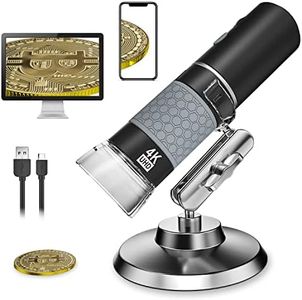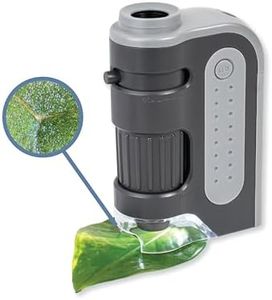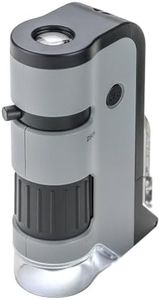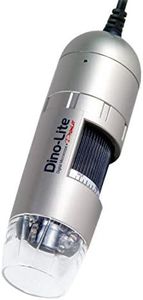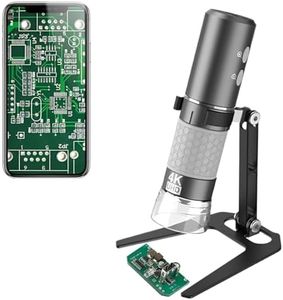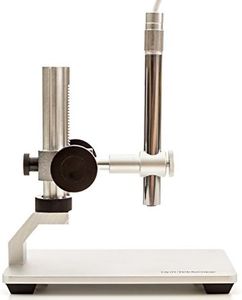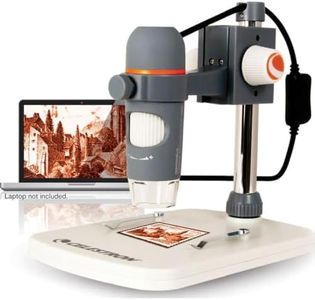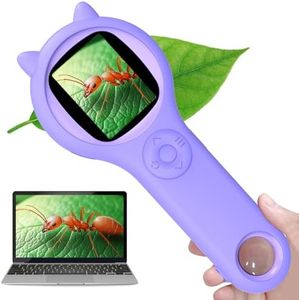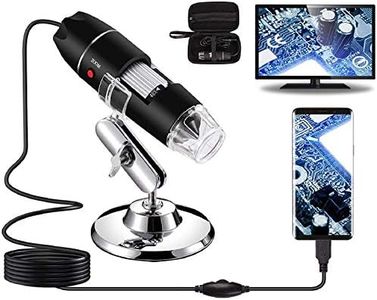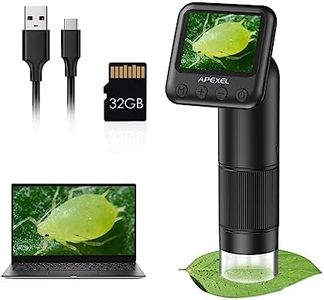We Use CookiesWe use cookies to enhance the security, performance,
functionality and for analytical and promotional activities. By continuing to browse this site you
are agreeing to our privacy policy
10 Best Handheld Microscopes
From leading brands and best sellers available on the web.Buying Guide for the Best Handheld Microscopes
Handheld microscopes are fantastic tools for exploring tiny details in everyday objects, nature, or even scientific samples, all with the convenience of portability. Choosing the right handheld microscope is about matching the device's capabilities to what you plan to observe, whether it's coins, bugs, electronics, or classroom experiments. Start by identifying what you want to use the microscope for, as this will help narrow down features that truly matter for your specific use.Magnification RangeMagnification range tells you how many times the microscope can enlarge an object and is a core feature to look at. Lower ranges, like 20x to 60x, let you easily view larger details like coin markings or fabrics, while middle ranges around 60x to 200x let you see the finer structures in insect wings or leaves. High ranges above 200x are typically used for observing the details of slides or tiny organisms. To choose the right magnification, think about the smallest object you wish to see clearly. For general hobbies and everyday exploration, a microscope with a broad but not extreme range is usually more flexible and useful.
Image Capture (Camera Resolution)Many handheld microscopes offer built-in cameras, measured in megapixels (MP), allowing you to take photos or record videos of your discoveries. Higher resolution means clearer, more detailed pictures. Models usually range from 1MP to 12MP or more. If you want to document your observations or show them to others, choose a device with higher resolution. But, average users often find 2MP to 5MP sufficient—only go higher if high-quality images are a key part of your purpose.
LightingBuilt-in lights, often LEDs, help illuminate tiny objects, and the number, brightness, or adjustability of these lights can greatly affect what you can see. Fewer LEDs or non-adjustable lights might struggle with shiny or uneven surfaces, while adjustable brightness is handy to reduce glare and shadows. If you expect to look at a variety of surfaces or need accurate color representation, consider microscopes with multiple, adjustable LEDs for more control over lighting.
Power SourceHandheld microscopes can run on batteries, rechargeable batteries, or through USB power. Battery-powered models are very portable, great for field work or travel, but need regular battery changes. USB-powered ones require a connection to a computer or power bank, offering convenience for long sessions but less freedom of movement. Rechargeable batteries offer a good balance for most users. Your preference depends on where and how often you'll use it—go for batteries if portability is key, or rechargeables if you're mainly working at home or school.
Screen Type or ConnectivitySome handheld microscopes have built-in screens, making them totally self-contained, while others connect to your smartphone, tablet, or computer via USB or WiFi. Built-in screen models are easy to use anywhere but may have smaller or lower-resolution displays; connecting to external devices generally gives you a bigger, clearer view. If you want to display images to a group or work with larger screens, look for good connectivity options. For solo, on-the-go exploration, an integrated screen may be all you need.
Ease of FocusingFocusing is all about how easily you can make what you're looking at sharp and clear. Some microscopes require manual adjustment—turning a knob or sliding a dial—while others have simple fixed-focus or autofocus. Manual focus gives you more control for different objects but takes more patience. For quick results or children, autofocus or easy dial systems are friendlier, but if you want precision or plan to look at many different specimens, manual focus is often better.
Build Quality and ErgonomicsSince handheld microscopes are often used for quick or mobile inspection, how they feel in your hand matters. Look for a sturdy, ergonomic design that's comfortable for your hand size, with buttons or dials that are easy to reach. A poor build can result in shaky images or discomfort during use. If you'll use it often or for longer sessions, prioritize comfortable, lightweight designs and durable materials.


